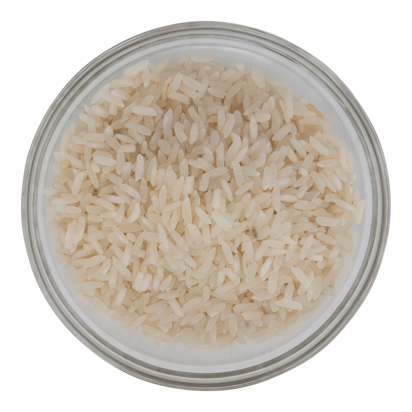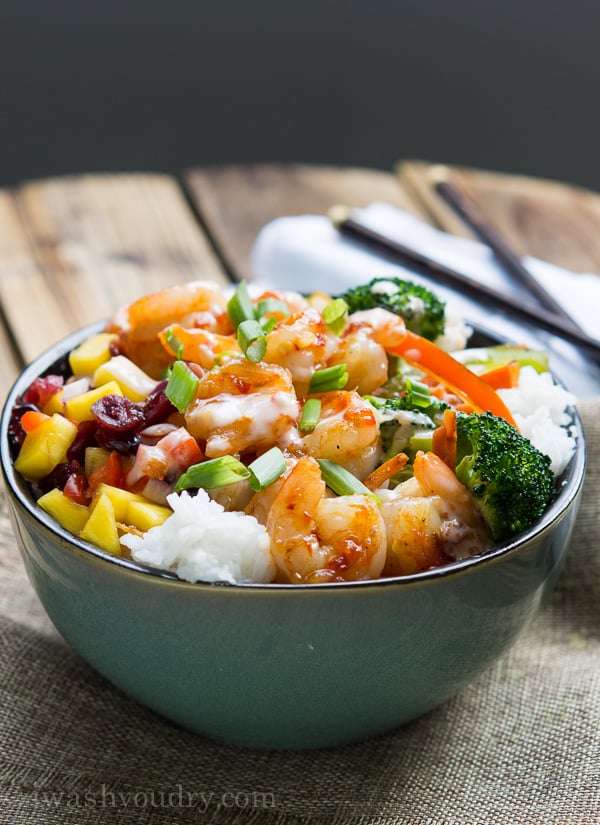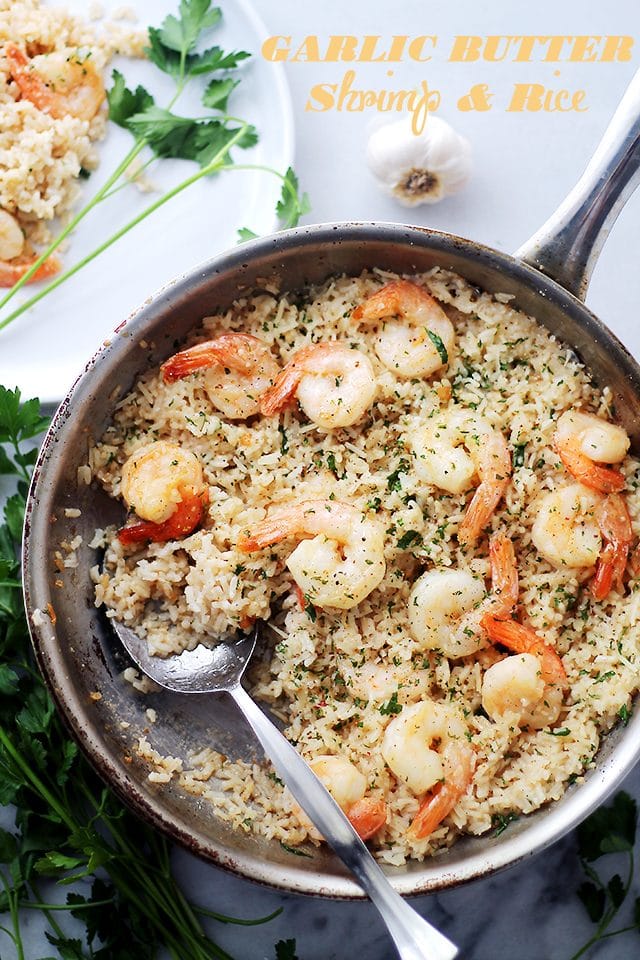Rice: Important Facts, Health Benefits, and Recipes
Explore the world of rice with our ultimate guide, covering its origins, health benefits, types, and cooking methods, while unlocking the secrets of this versatile global staple.

Nutritional Facts
1 cup
Amount per serving
Calories
675.2
Carbohydrates
147.9 g
Fat
1.2 g
Protein
13.2 g
Saturated Fat
0.3 g
Sodium
9.2 mg
Fiber
2.4 g
Sugar
0.2 g
Best Rice Recipes
-

-

-

-

-

-

-

-

-
![Cilantro Lime Rice Cafe Rio Copycat Image]()
-
![Southwestern Soup Image]()
-
![Stuffed Poblano Peppers with Spanish Style Rice Image]()
-
![Golden Rice Salad Image]()
-
![Turkey Bacon Meatballs Recipe Image]()
-
![Quinoa Stuffed Peppers Image]()
-
![Instant Pot Stuffed Peppers Image]()
-
![Puerto Rican Rice With Pigeon Peas Recipe Image]()
-
![How to Use Your Rice Cooker and a Basic Rice Recipe Image]()
-
![Kurnik: Russian Chicken Pie Recipe Image]()
-
![Baked Stuffed Cabbage Rolls Recipe Image]()
-
![Avgolemono (Greek Lemon Chicken Soup) Recipe Image]()
-
![Grilled Sausage and Mushroom Bowls Recipe Image]()
-
![Rizogalo Greek Rice Pudding Recipe Image]()
-
![Spicy Zucchini Soup Recipe Image]()
-
![Toltott Kaposzta: Hungarian Stuffed Cabbage Recipe Image]()
-
![Korean Vegetable Porridge (Yachae Jook) Recipe Image]()
-
![Mom's Turkey Soup Recipe Image]()
-
![Avgolemono Soup Recipe Image]()
-
![Crock Pot Spanish Rice With Ground Beef Recipe Image]()
-
![Easy Butter and Herb Baked Oysters Recipe Image]()
-
![Croatian Stuffed Cabbage Recipe Image]()
-
![Trinidad Pelau Chicken and Pigeon Peas Recipe Image]()
-
![Vegetarian Rice and Cheddar Stuffed Peppers Recipe Image]()
-
![7 Layer Casserole with Ground Beef and Rice Recipe Image]()
-
![Indian Chicken Pilaf (Pulao) Recipe Image]()
-
![Avgolemono Soup (Greek Lemon-Egg Chicken Soup) Recipe Image]()
-
![Steamed Indian Lentil and Rice Cakes (Idlis) Recipe Image]()
-
![<em>Bossam</em> (Korean Boiled-Pork Wraps) Recipe Image]()
-
![Cajun Gumbo With Chicken and Andouille Sausage Recipe Image]()
-
-
![Cuban Beef Casserole with Black Beans and Cumin Rice Recipe Image]()
-
![Beyond Curry: Khichdi with Eggplant Fritters Recipe Image]()
-
![NY Dosas' Pondicherry Dosa from 'New York a la Cart' Image]()
-
![Spanakopita (Greek Savory Greens Pie) Recipe Image]()
-
![Insalata di Riso Recipe | Seriously Italian Image]()
-
![Singaporean Chili Crab Recipe Image]()
-
![Tea Smoked Rotisserie Duck Recipe Image]()
-
![Zucchini and Lettuce Soup With Pesto Recipe Image]()
-
![Spanish Rice With Squid (Arroz con Calamares) Recipe Image]()









:max_bytes(150000):strip_icc()/rice-with-pigeon-peas-recipe-2138050-hero-01-a2a7d610c9614e958b475731d82d66ef.jpg)
:max_bytes(150000):strip_icc()/how-to-use-your-rice-cooker-482851-9_preview-5aff4057ff1b7800205aeac9.jpeg)
:max_bytes(150000):strip_icc()/russian-chicken-pie-recipe-kurnik-1137307-f89e165c4f684bdfbac76eb69f860eaa.jpg)
:max_bytes(150000):strip_icc()/baked-stuffed-cabbage-rolls-3057417-hero-01-f37b5c04289c4e0cb1c0abb38ba9dee9.jpg)
:max_bytes(150000):strip_icc()/greek-egg-lemon-chicken-soup-1705784-hero-06-7d1dad2dfcaf49cb95ad1a60bbc803a3.jpg)
:max_bytes(150000):strip_icc()/__opt__aboutcom__coeus__resources__content_migration__simply_recipes__uploads__2017__05__2017-05-29-GrilledSausageBowlls-8-208a12e3b79348c890a5251201168faa.jpg)
:max_bytes(150000):strip_icc()/greek-rice-pudding-1706092-09-2-5c60c93d46e0fb0001f24ffc.jpg)
:max_bytes(150000):strip_icc()/__opt__aboutcom__coeus__resources__content_migration__simply_recipes__uploads__2010__08__spicy-zucchini-soup-640-1810599ffd0241929ff24d05dc159954.jpg)
:max_bytes(150000):strip_icc()/lithuanian-stuffed-cabbage-rolls-56c28f1c3df78c0b138f80e2.jpg)
:max_bytes(150000):strip_icc()/korean-vegetable-porridge-2118793-hero-01-ed9df9337cd1472eb8eb7cd061cc0c73.jpg)
:max_bytes(150000):strip_icc()/__opt__aboutcom__coeus__resources__content_migration__simply_recipes__uploads__2014__11__turkey-soup-horiz-a-1600-465bc13451fe47ff912ebb154e6e4b4e.jpg)
:max_bytes(150000):strip_icc()/__opt__aboutcom__coeus__resources__content_migration__simply_recipes__uploads__2012__05__avgolemono-soup-horiz-640-21e6c87813bf44c5995530197a31c9db.jpg)
:max_bytes(150000):strip_icc()/crockpot-spanish-rice-with-ground-beef-3055206-hero-01-a1e2a3d10f1e4e7ea20c98732b6bdefc.jpg)
:max_bytes(150000):strip_icc()/easy-butter-and-herb-baked-oysters-4049551-hero-01-11bfc0f1661f4045a19d7749aa6b34f2.jpg)
:max_bytes(150000):strip_icc()/GettyImages-77352729-582f0d673df78c6f6a00166b.jpg)
:max_bytes(150000):strip_icc()/trini-pelau-recipe-2138057-hero-01-d291688c92eb49aa937612959c536055.jpg)
:max_bytes(150000):strip_icc()/stuffed-peppers-with-rice-and-cheese-3061375-hero-01-97fc03e471d84d90a5e3f966dd20eb8e.jpg)
:max_bytes(150000):strip_icc()/7-layer-casserole-with-ground-beef-3057398-hero-01-d98772b446f041d3864c9b0475540110.jpg)
:max_bytes(150000):strip_icc()/chickenpulao-56e758415f9b5854a9f966d5.jpg)
:max_bytes(150000):strip_icc()/070623_Avgolemono-Soup-MPPSoupsAndStews-MorganHuntGlaze-27373c43431c4c6286af983f7bb72897.jpg)
:max_bytes(150000):strip_icc()/__opt__aboutcom__coeus__resources__content_migration__serious_eats__seriouseats.com__recipes__images__2013__09__15.9.2013-Idli20Indian20steamed20RIce20and20Lentil20cakes-48a1385ce94741319ca3d8d4682a5005.jpg)
:max_bytes(150000):strip_icc()/__opt__aboutcom__coeus__resources__content_migration__serious_eats__seriouseats.com__2018__12__20181204-bossam-vicky-wasik-9-cda3a2aec3584316b47a152857a435ff.jpg)
:max_bytes(150000):strip_icc()/__opt__aboutcom__coeus__resources__content_migration__serious_eats__seriouseats.com__2019__09__20190905-gumbo-vicky-wasik-4I8A7088-d30427daa31d4915b7ce5e27c5919450.jpg)
:max_bytes(150000):strip_icc()/__opt__aboutcom__coeus__resources__content_migration__serious_eats__seriouseats.com__recipes__images__2013__07__072613-260753-Serious-Eats-Sunday-Supper-Cuban-CasseroleB-efc4bef39e824339bed790edec6bc59d.jpg)
:max_bytes(150000):strip_icc()/__opt__aboutcom__coeus__resources__content_migration__serious_eats__seriouseats.com__recipes__upload__2011__09__20110919-khichdi-with-eggplant-fritters-8ebd360266f64d0d8f1db74aa8e07f9a.jpg)
:max_bytes(150000):strip_icc()/__opt__aboutcom__coeus__resources__content_migration__serious_eats__seriouseats.com__recipes__images__2013__04__041713-248188-cook-the-book-ny-dosas-pondicherry-dosa-6a8f19982cf44ea7bcc69795edbc16f1.jpg)
:max_bytes(150000):strip_icc()/__opt__aboutcom__coeus__resources__content_migration__serious_eats__seriouseats.com__2018__06__20180615-spanikopita-vicky-wasik-26-cf81e515828e4330b57c60ac28c689fa.jpg)
:max_bytes(150000):strip_icc()/__opt__aboutcom__coeus__resources__content_migration__serious_eats__seriouseats.com__recipes__images__20090528seriouslyitalian-aff6619b0b08431d945b00b5b844538d.jpg)
:max_bytes(150000):strip_icc()/__opt__aboutcom__coeus__resources__content_migration__serious_eats__seriouseats.com__recipes__images__2013__02__20130224-242112-singapore-chili-crab-edit-e02be72e16974f5da6fef41ec4ca7ea4.jpg)
:max_bytes(150000):strip_icc()/__opt__aboutcom__coeus__resources__content_migration__serious_eats__seriouseats.com__recipes__images__2011__12__20111218-184325-tea-smoked-duck-05492eff0e844c2280ceffe93d84eff4.jpg)
:max_bytes(150000):strip_icc()/__opt__aboutcom__coeus__resources__content_migration__serious_eats__seriouseats.com__recipes__images__2016__09__20160809-zucchini-lettuce-soup-pesto-2-4c0356a52e39471ca3ac2f392e8d5c7e.jpg)
:max_bytes(150000):strip_icc()/GettyImages-1732283841-5a215c2796f7d0001969ca40.jpg)